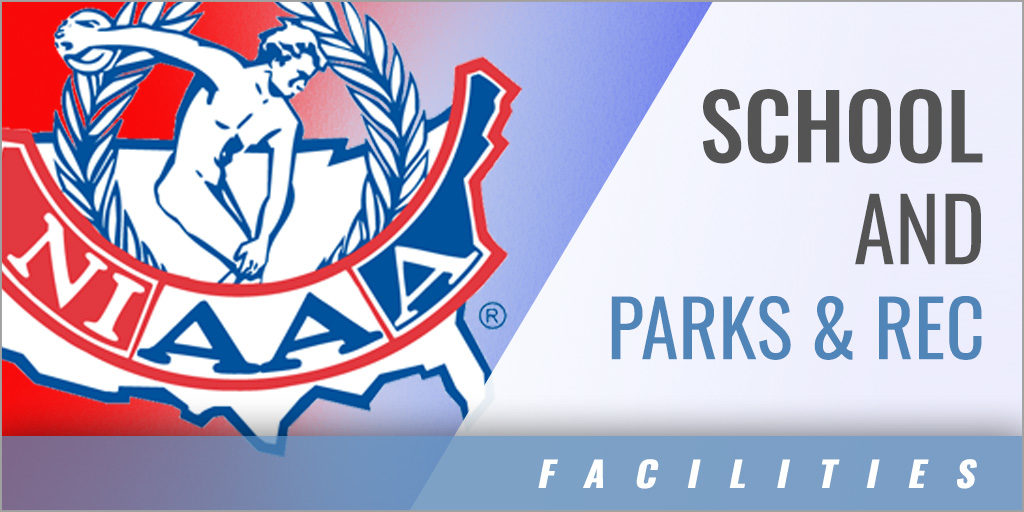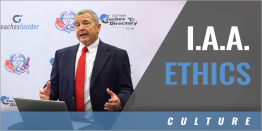
By: Matt Hensley, CMAA - Illinois The demands that communities place on the facilities, personnel, and other extra-curricular resources of a school district can, at times, stretch those resources to the limit. The same could be said for the demands placed on the local service providers like a city or village parks and recreation program. Working together however, these two distinct organizations can partner in a vision of stewardship that meets the ever-increasing expectations of stakeholders across shared populations. The first step to building a successful relationship between the school and community programs is building and maintaining open and effective lines of communication. Leadership, and other staff, must not only have a clear understanding of the communication chain of command but also the ability to deliver messages about shared spaces and resources in an effective and timely manner. Knowing the who, and how, information is to be shared both internally and externally, is important so that clear and consistent messages are delivered about how facilities and resources are to be used and shared and to prevent conflicts or misunderstanding across programs and participants. With open and effective communication comes heightened levels of trust for both for staff and participants. Author and motivational speaker Jon Gordon (www.JonGordon.com) speaks of how trust builds long-term relationships, and helps to generate the commitment to a vision and mission that demonstrates caring and produces the hard work necessary for success. Trusting that facilities will be properly maintained and supervised, resources are effectively allocated, and that leadership and staff are going to "say what they do and then do what they say" provides a piece of mind for both school and community leaders and creates a shared sense of purpose. The best intentions and grandest of ideas will fail if the relationship between a school district and local parks and recreation does not allow for compromise. Unexpected demands on facilities and personnel, increases in program participation, and weather can send both sides scrambling to meet demands on short notice. Leaders must be willing to accommodate the unexpected and instill in staff a sense of both the intrinsic and extrinsic value of flexibility for their programs. The sense of stewardship that comes from a mutually beneficial relationship will resonate across the feeder programs that support the interscholastic program and instill a sense of shared purpose with the parents and athletes that will one day fill the rosters of the high school program. In order for a vision of shared facilities and programs to be successful, sponsoring organizations must understand what each side can provide to meet the expectations of programming. If a school is unwilling to share equipment or the local park and rec program is unable to provide trained personnel to protect the costly investment of infrastructure, only a recipe for failure will follow. If however, coaches and student volunteer or are employed by the groups sponsoring the program, a sense of ownership will develop that not only protects facilities and equipment but that also builds valuable relationships across the community promotes sustainability and success. Unfortunately, the demand for facilities often exceeds availability, particularly in the winter months when indoor space is at a premium. In order to be fair, if schools are going to allow outside groups into their facilities and create shared spaces, it is necessary to have a well thought-out hierarchy that not only sets the priority list, but also establishes costs and responsibilities for external organizations. A priority list might look something like this: PRIORITY LIST USE FOR FACILITY USAGE: No Fee Groups - 1st Priority - High School Curricular or Extra-Curricular Programs 2nd Priority - Other School District Curricular or Extra-Curricular Programs 3rd Priority - Community Park and Recreation Programming 4th Priority - Open Public Access Hours (if available) Fee Charge Groups (Within School District Boundaries) - 4th Priority - Community Sport Leagues and Teams (by organization) 5th Priority - Individual Sport Teams 6th Priority - Other Outside group and Organizations By prioritizing public recreation programming over private organizations school will provide services to the stakeholders that already receive educational services and groups that are likely most familiar with the common mission and vision of programming. As with any relationship, the interaction between schools and the other stakeholders with whom they share facilities need to be evaluated on an ongoing basis. When the relationship is solid and the leaders of both groups are experienced professionals that communication could be as simple as a pre-season meeting between program leaders. When new persons assume positions of leadership within the involved organizations, a more thorough review might be necessary. Regardless of how and when any on-review or evaluation takes place it is important that all involved parties bring all changes, concerns, wants, and needs to the table. It is also important as the relationship matures to make sure that those higher up the administrative chain of command of both organizations are keeping appraised of both progress and problems. It is a good practice in all situations to maintain open and dynamic lines of communication to make sure everyone knows the how and why of any ongoing programming. At the end of the day, the sharing of facilities between the local school district and community park and recreation programs serve to meet the needs of stakeholders and to provide the opportunity for both schools and communities to set the tone for an example of cooperative participation. This example will not only paint a positive picture of both sides in the eyes of the community, it will also demonstrate an example of good stewardship or resources in a time when financial resources are stretched thin for all governmental agencies. Municipal Recreation Department and Schools – Sharing Your Vision and Resources The community of Mahomet-Seymour is a rapidly growing community located just east of the Champaign-Urbana metro area. The demand on facilities and programming continues to strain both the local school district and the local parks and recreation program. Managing growth, demand and expectations are a constant struggle. Much of the growth can be attributed to the success and excellence of the School District, the Parks and Recreation Department and the proximity to the University of Illinois and Carle Hospital. With resources stretched and demand high, it is critical for both the school and the municipal department to share the same vision. After all, the service area and taxing districts are symbiotic. In our community, staff from both agencies understand the importance of shared resources having a positive effect on the end-user (our taxpayer). Sharing facilities, equipment and other resources creates a positive image for our agencies and streamlines services to our community. In Mahomet, the staff work diligently towards a common goal. Provide quality programming and facility management for our community. This involves constant communication. Staff meets at least quarterly to discuss needs and demands. Calendars are shared, future demands are discussed and ongoing capital projects are aligned. This ongoing dialogue among staff continues to develop the trust mentioned earlier that is necessary for both organizations to be successful. Ultimately, each are better prepared to meet the demands of the present and the future. When offering community programming, consistency and availability of space is key to a successful program. When the schools prioritize space for community programming, they are essentially prioritizing on open access to recreation for our public. Programs like basketball and volleyball are cornerstones in any public recreation agency. The foundation for access to facilities provides participants of all age's access to recreation opportunities. Shared Resources = Positive Benefits Access to recreation opportunities creates a number of tangible and intangible benefits for both our schools and our community. The health benefits are obvious. Exercise and recreation leads to healthier communities. There are a number of studies that support this statement. Participation in recreation activities improves physical, psychological and emotional health. However, often unnoticed are the intangible benefits. Many participants and their parent/guardians benefit from the social structure that is created through recreation programming. Children meet new friends and parents form new relationships. Ultimately, this creates a more positive environment in the classroom and in the community. These programs help strengthen our community through social interaction, volunteerism and create a sense of civic pride in our program and facilities. Additionally, there is a positive economic impact on our community that is evident when both the schools and the local recreation department work together. Often times, the synergy created by the programming provides opportunities for families and community members to fill up the gas tank, have lunch after the game or simply visit our local businesses before, during and after a recreation program. In a community located just 10 miles east of a metropolitan area, local recreation opportunities provides an opportunity for our community to "shop local". The trickle-down effect of shopping local has a positive financial effect on both the school and the municipal recreation department. Furthermore, sponsorship opportunities for our recreation programs are more easily attained when that bond is formed locally. Finally, access to recreation programs creates a safer community by keeping children engaged in positive activities. These programs also create job opportunities for our local high school students. Empowering them to seek, apply and retain a job. Tools necessary to have success later in life. It goes without saying that these positive benefits for our community would not be made possible without the foundation of both the school district and the Village recreation department working together towards a shared vision. |







